The world of music streaming is a vibrant and rapidly expanding landscape, reshaping how we enjoy music. It’s become a primary avenue for music consumption, offering immense libraries, tailored suggestions, and instant access to millions of tracks through subscription models.
The music streaming market is set to hit around €23.74 billion in 2023, with an estimated 6.27% annual growth through 2028. The user base is anticipated to grow from 700 million in 2023 to 1.1 billion by 2028.
Spotify leads the pack with over 450 million monthly active users, joined by significant players like Apple Music, Amazon Music, YouTube Music, Deezer, and Tidal, each catering to distinct audiences with unique features.
For listeners, the perks are abundant: extensive music libraries, on-demand listening, personalized suggestions, offline access, and affordable plans. However, challenges loom, including concerns over artist compensation, market dominance, and privacy issues surrounding user data.
Looking ahead, expect more personalized recommendations, advancements in audio quality, interactive features like live concerts and virtual reality experiences, and deeper social integration within these platforms. This industry remains in constant flux, promising ongoing innovation and global impact in the years ahead.
To better understand the music streaming industry, our team has recently conducted a PESTEL analysis to examine the impact of the macro-environment factors on Spotify’s growth in the next years.
A PESTEL analysis is a strategic management framework used to examine the external macro-environmental factors that can impact an organization or industry.
The following is a detailed article on PESTEL Analysis of Spotify. It discusses the political, economic, sociocultural, technological, environmental, and legal factors influencing its performance and profitability in the coming years.
Spotify PESTEL Analysis
Spotify overview
Spotify, synonymous with on-demand music, has revolutionized the audio landscape. This section delves into the depths of this audio giant, exploring its history, activities, competitors, suppliers, customers, strategies, and key figures.
A Melodious Journey Through Time: Spotify’s History
Spotify’s story began in 2006, a brainchild of Daniel Ek and Martin Lorentzon in Sweden. Frustrated by rampant music piracy, they envisioned a legal and convenient music streaming platform.
In 2008, Spotify launched in Europe, facing initial challenges from record labels. However, its freemium model (combining free ad-supported and paid ad-free tiers) proved a game-changer, attracting millions of users.
Beyond Music: Spotify’s Diversified Activities
While music remains its core, Spotify has expanded its horizons. Today, it boasts:
- Podcasts: With over 4 million podcasts, Spotify has become a leading platform catering to diverse tastes and interests.
- Audiobooks: Expanding its reach beyond music, Spotify ventured into audiobooks, offering a comprehensive library for listeners.
- Live Events: Capitalizing on its user base, Spotify organizes live music events and experiences, fostering deeper connections between artists and fans.
Facing the Beat: Spotify’s Competitors
The music streaming battlefield is crowded, with Spotify facing stiff competition from:
- Apple Music: With tight integration into Apple’s ecosystem and exclusive content, Apple Music attracts loyal Apple users.
- Amazon Music: With Prime subscriptions and high-quality audio options, Amazon Music poses a substantial challenge.
- YouTube Music: Leveraging YouTube’s vast music library and video integration, YouTube Music offers a unique proposition.
Behind the Curtain: Spotify’s Suppliers and Customers
Spotify’s success hinges on crucial partnerships:
- Record Labels: Major labels like Universal Music Group and Sony Music Entertainment supply the vast music library.
- Content Creators: Musicians, podcasters, and audiobook narrators are the platform’s lifeblood.
Spotify caters to a diverse customer base:
- Music Enthusiasts: Spotify offers something for everyone, from casual listeners to audiophiles.
- Podcast Devotees: Podcast fans rely on Spotify for their daily dose of spoken-word content.
- Tech-Savvy Individuals: Those seeking a seamless and personalized audio experience find Spotify’s features and algorithms appealing.
Dancing to the Rhythm: Spotify’s Strategies
Spotify’s strategic playbook includes:
- Content Acquisition: Continuously expanding its music library, acquiring podcast studios, and investing in original content.
- Personalization: Utilizing sophisticated algorithms to recommend music and podcasts tailored to individual preferences.
- Tech Innovation: It is constantly upgrading its platform with features like AI-powered DJ and spatial audio.
- Global Expansion: Entering new markets and adapting to local preferences to reach a wider audience.
The Numbers Game: Spotify’s Key Figures
As of November 2023:
- Monthly Active Users (MAUs): 456 million
- Premium Subscribers: 195 million
- Presence: Over 180 countries
- Revenue (2022): €9.8 billion
The Future Symphony: What’s Next for Spotify?
Spotify’s future looks bright, with opportunities in:
- AI-powered personalization: Leveraging AI to create even more immersive and customized listening experiences.
- Live streaming and virtual concerts: Providing interactive and engaging live music experiences within the platform.
- Expanding into new markets: Focusing on emerging markets with high growth potential.
Spotify’s journey is far from over. With its commitment to innovation, diverse content, and user-centric approach, Spotify is poised to continue its reign as the king of audio streaming, shaping the future of how we listen to music, podcasts, and more.
We now turn to the results of the Spotify PESTEL analysis of:
Political environment
The international political environment can have both positive and negative impacts on Spotify’s growth and sustainability in the coming years. Here’s a breakdown of the potential effects:
Positive Impacts:
- Regional Trade Agreements: The recent Regional Comprehensive Economic Partnership (RCEP) agreement, encompassing 15 Asia-Pacific countries, could open up new markets for Spotify in Southeast Asia and potentially reduce licensing costs for music content.
- Focus on Digital Economies: Governments in developing countries, like India and Brazil, are increasingly prioritizing digital infrastructure and internet access, creating fertile ground for Spotify’s expansion.
- Post-Pandemic Recovery: As economies recover from the COVID-19 pandemic, consumer spending on entertainment like music streaming might increase, leading to potential subscriber growth for Spotify.
Negative Impacts:
- Russia-Ukraine War and its Global Ripples: The ongoing war has disrupted Spotify’s operations in Russia and Ukraine, leading to subscriber losses and revenue challenges. Additionally, it has created economic uncertainty and inflation globally, potentially impacting consumer spending on streaming services.
- Tensions between China and the United States: Escalating tensions between these two economic giants could lead to restrictions on Spotify’s operations in China, a potentially massive market.
- Data Privacy Regulations: Stringent data privacy regulations like Europe’s General Data Protection Regulation (GDPR) can increase compliance costs for Spotify and limit its ability to collect and utilize user data for targeted advertising, impacting revenue.
Other global regulations impact Spotify’s operations: India’s Data Localization Policy mandates data storage in India, posing logistical and compliance challenges.
Also, Brazil’s “Fake News” Law raises concerns about Spotify’s hosting of podcasts and user-generated content due to misinformation worries. In the EU, the Copyright Directive’s Article 13, dubbed the “upload filter,” triggers censorship concerns, potentially affecting Spotify’s ability to host user-generated content.
These regulations pose hurdles for Spotify, spanning data storage requirements, content hosting, and potential censorship issues, necessitating strategic adaptation to comply while maintaining service quality.
Economic environment
The international economic landscape plays a crucial role in Spotify’s growth, presenting both headwinds and tailwinds for its subscription and revenue models. Here are some critical economic elements to consider:
Positive Impacts:
- Global Economic Growth: A solid global economy translates to higher disposable income, potentially leading to increased spending on entertainment like music streaming. This can propel subscriber growth and revenue for Spotify.
- Emerging Market Expansion: Expanding middle classes in developing countries like India, Turkey, and Brazil offer vast potential markets for Spotify to tap into. Rising internet penetration and smartphone adoption in these regions create fertile ground for streaming services.
- Currency Fluctuations: If the US dollar weakens against other currencies, it can make Spotify’s subscriptions more affordable in international markets, boosting subscriber acquisition in those regions.
Negative Impacts:
- Economic Downturns: Global recessions or economic slowdowns can lead to decreased consumer spending, impacting subscriptions and potentially forcing price adjustments. This could hinder Spotify’s growth, especially in price-sensitive markets. For instance, China’s Economic Slowdown could impact consumer spending on streaming services, affecting Spotify’s potential growth in this crucial market.
- Inflation and Rising Costs: High inflation erodes disposable income and can make subscriptions less affordable for consumers. Additionally, rising production and operational costs can squeeze Spotify’s margins. For example, the depreciation of the Brazilian real against the US dollar has made Spotify’s subscriptions more expensive for local users, potentially leading to churn and hindering growth.
- Trade Wars and Sanctions: Trade wars and sanctions can disrupt Spotify’s operations in certain countries, impacting revenue and user growth. For example, the ongoing situation in Russia and Ukraine has led to subscriber losses for Spotify.
- Supply Chain Disruptions: Global supply chain disruptions caused by factors like the pandemic can delay hardware production and access, impacting smartphone adoption and potentially hindering Spotify’s user base expansion.
Overall, Spotify’s growth remains closely intertwined with the global economic climate. Carefully monitoring economic trends, adapting pricing strategies to different markets, and diversifying its revenue streams will be essential for Spotify to navigate the economic landscape and ensure sustainable growth in the coming years.
Social environment
Societal trends and cultural shifts heavily influence the music streaming landscape. Here are some key social and cultural factors that could influence Spotify’s growth in the coming years:
Positive Effects:
- Growing Music Consumption: The global music industry is experiencing consistent growth, fueled by factors like rising smartphone penetration and increasing internet access. This bodes well for music streaming platforms like Spotify.
- Social Media Integration: Integrating with social media platforms like TikTok and Instagram can expose Spotify to new audiences and drive user engagement. For example, TikTok’s music-focused features have created viral trends and boosted artist popularity, potentially leading to increased streaming on Spotify.
- Embracing Diversity and Inclusion: Expanding content offerings to cater to diverse cultural preferences and underrepresented communities can attract new user segments and foster a more inclusive platform. Spotify’s recent focus on highlighting African and Latin American artists exemplifies this approach.
- Focus on Mental Health and Wellness: Incorporating features like curated playlists for mindfulness and mental well-being can cater to a growing trend and attract health-conscious users.
Negative effects:
- Piracy and Copyright Infringement: The continued persistence of piracy and copyright infringement can cut into Spotify’s revenue and hamper its ability to compensate artists fairly. Finding innovative solutions to combat these issues remains crucial.
- Artist Payout Controversies: Concerns about low artist compensation through streaming platforms can lead to boycotts and negative publicity, potentially impacting user perception and subscription rates. Addressing these concerns and exploring fairer revenue distribution models is vital.
- Cultural Censorship and Restrictions: Navigating cultural sensitivities and censorship laws in different countries can pose challenges for Spotify’s content offerings and user base. Balancing freedom of expression with cultural respect will be essential in expanding globally.
Overall, understanding and adapting to evolving social and cultural trends will be crucial for Spotify’s future success. By embracing diversity, offering diverse content, and navigating cultural sensitivities, Spotify can attract new audiences, foster a positive brand image, and ensure sustainable growth in the ever-changing music streaming landscape.
Technological environment
The music streaming industry is a playground for rapid technological advancements, constantly evolving and adapting to new tools and trends. Here are some vital technological factors that could influence the industry, both today and in the coming years:
Opportunities:
- Audio Innovation: High-fidelity audio formats like Dolby Atmos and spatial audio offer immersive listening experiences, potentially attracting audiophiles and driving subscription upgrades.
- Artificial intelligence (AI)-powered personalization: Advanced AI algorithms can personalize music recommendations and curate playlists to individual user preferences, enhancing user engagement and loyalty.
- Voice assistants and smart speakers: Integration with voice assistants like Siri and Alexa provides seamless music control and hands-free listening, making streaming more convenient and accessible.
- Live streaming and interactive features: Live concerts, artist Q&A sessions, and virtual reality experiences can create unique engagement opportunities and foster deeper connections between artists and fans.
- AR/VR integration: Augmented reality (AR) and virtual reality (VR) experiences could revolutionize music consumption, creating immersive concert environments and interactive music videos.
- Biometric authentication for personalized experiences: Using biometric data like heart rate and brain activity to personalize music recommendations could create a truly tailored listening experience.
- Focus on accessibility features: Incorporating features like screen readers and audio descriptions for visually impaired users can make music streaming more inclusive and accessible.
Threats:
- Data privacy concerns: Increased data collection and targeted advertising practices raise concerns about user privacy, requiring platforms like Spotify to ensure transparency and build trust with users.
- Net neutrality concerns: Potential rollbacks of net neutrality regulations could lead to unequal internet access and bandwidth throttling, impacting the streaming experience for specific users.
- Competition from alternative platforms: The emergence of new platforms like Clubhouse and Discord, focused on audio-based social interaction, could offer alternative listening experiences and challenge Spotify’s dominance.
- Blockchain-based music distribution: Utilizing blockchain technology for music distribution could offer fairer compensation for artists, track royalties transparently, and potentially disrupt the traditional music industry model.
- Technological disparities: Unequal access to high-speed internet and affordable devices in certain regions can hamper the industry’s global reach and inclusivity.
Ecological environment
The music streaming industry, while existing mainly in the digital realm, is not immune to the genuine concerns of the ecological environment.
In fact, the relationship between music streaming and the environment is a complex one, presenting both exciting opportunities and significant threats.
Let’s delve into the green melody of this interplay:
Opportunities:
- Reduced environmental footprint: Compared to traditional music consumption methods like physical CDs and vinyl records, streaming services eliminate the need for resource-intensive manufacturing, packaging, and transportation. This can lead to a smaller carbon footprint and reduced environmental impact.
- Promoting eco-conscious artists and music: Music streaming platforms can curate playlists and highlight artists who advocate for environmental causes, raising awareness and inspiring action among listeners. Imagine themed playlists like “Songs for the Earth” or “Anthems for Sustainability.”
- Carbon offsetting initiatives: Music streaming services can partner with environmental organizations to offset their carbon emissions through tree planting initiatives, renewable energy projects, and other sustainability efforts. This demonstrates a commitment to ecological responsibility and attracts eco-conscious users.
- Engaging in green data centers: Choosing data centers powered by renewable energy sources like solar and wind power can significantly reduce the industry’s reliance on fossil fuels and lessen its environmental impact.
- Encouraging mindful listening habits: Streaming services can implement features that enable users to adopt sustainable listening habits, such as auto-off timers to prevent energy waste and curated playlists promoting environmental mindfulness.
Threats:
- Energy consumption of data centers: The vast network of data centers supporting music streaming requires significant amounts of energy, potentially contributing to greenhouse gas emissions if not powered by renewable sources.
- E-waste from discarded devices: The rapid turnover of smartphones and other devices used for streaming can generate electronic waste (e-waste), posing environmental and health hazards if not disposed of responsibly.
- Limited reach in eco-conscious communities: In regions with limited internet access or reliance on outdated devices, the benefits of eco-friendly music streaming might still need to be fully realized, perpetuating existing environmental inequalities.
- Lack of transparency and accountability: Music streaming platforms need to be transparent about their environmental footprint and implement robust sustainability measures to avoid greenwashing accusations.
- Potential for increased music piracy: Environmental concerns around physical music production could incentivize some users to turn to illegal music piracy, negating the environmental benefits of streaming.
Legal environment
Opportunities:
- Copyright reform and fairer artist compensation: Recent developments like the EU’s Copyright Directive and advocacy for more equitable royalty distribution models could lead to increased artist compensation and a more sustainable music ecosystem. This incentivizes artists to create and attracts users who value ethical streaming practices.
- Clearer licensing agreements and regulations: Standardized and transparent licensing agreements can create a more predictable operating environment for streaming platforms, facilitating global expansion and mitigating legal disputes.
- Protection of intellectual property: Robust copyright protection mechanisms safeguard artists’ work and encourage investment in music creation, ultimately benefiting both artists and listeners.
- Collaboration with legal institutions: Building partnerships with music rights organizations and legal bodies can foster compliance with regulations, promote education about intellectual property rights, and create a positive image for the industry.
- Innovation in legal practices: Embracing legal tech solutions like blockchain-based music distribution could streamline royalty payments, track copyright ownership transparently, and disrupt outdated music industry models.
Threats:
- Antitrust and competition concerns: Growing dominance and potential anti-competitive practices of significant streaming platforms can attract regulatory scrutiny and legal challenges, impacting industry dynamics and user choice.
- Data privacy restrictions and regulations: Stringent data privacy laws like GDPR can increase compliance costs and limit data collection practices, moving targeted advertising and personalized recommendations.
- Censorship and content restrictions: Government regulations and content moderation policies in certain countries can restrict access to certain music and limit the global reach of streaming platforms.
- Potential legal battles over user-generated content and remixes: Copyright disputes surrounding user-generated content and remixes can lead to complex legal battles, impacting user freedom and platform liability.
- Evolving legal interpretations of fair use and copyright exceptions: Uncertainties regarding fair use and exceptions to copyright laws can create legal grey areas, hindering innovation and creative expression in the music streaming landscape.
Conclusion
Spotify, the dominant force in music streaming, faces a mix of existing and potential challenges in its quest for growth and relevance.
Presently, competition from major rivals like Apple Music and YouTube Music drives Spotify to constantly upgrade its features and user interface.
The concern over low artist payouts per stream impacts its reputation and artist relationships while navigating complex music licensing agreements restricts content availability in some areas.
Balancing targeted ads with user privacy is an ongoing struggle, and although Spotify heavily invests in podcasts, monetization remains tricky in a fiercely competitive landscape.
Looking ahead, potential challenges loom on multiple fronts. Advancements in technology, such as blockchain-based music distribution or shifts in consumer preferences toward shorter formats, pose adaptation challenges.
Macroeconomic fluctuations could impact consumer spending, while geopolitical tensions and evolving legal landscapes could hinder global expansion.
To tackle these challenges, Spotify might consider exclusive content deals, fairer artist compensation models, embracing emerging tech, prioritizing data privacy, and staying responsive to changing user habits to secure its future growth and competitiveness.
Read also: SWOT Analysis of Spotify
PESTEL analysis examples 2024
To better understand the PESTEL analysis, we invite you to read our recent free examples of the Pestel framework.
PESTEL analysis of DHL
Click here to read our example of DHL’s PESTEL analysis.
PESTEL analysis of FedEx
Click here to read our example of FedEx’s PESTEL analysis.
PESTEL analysis of Chipotle
Click here to read our example of Chipotle’s PESTEL analysis.
PESTEL analysis of Brazil
Click here to read our example of Pestel’s analysis of Brazil.
Chick-fil-A PESTEL Analysis
Click here to read our example of Chick-fil-A Pestel analysis.
Costco PESTEL Analysis
Click here to read our example of Costco Pestel analysis.
Microsoft PESTEL Analysis
Click here to read our example of Microsoft Pestel analysis.
Disney PESTEL Analysis
Click here to read our example of Disney Pestel analysis.
Airline Industry PESTEL Analysis
Click here to read our example of the Airline industry Pestel analysis.
Walmart Pestel Analysis
Click here to read our example of Walmart Pestel analysis.
Amazon Pestel Analysis
Click here to read our example of Amazon Pestel analysis.
McDonald’s Pestel Analysis
Click here to read our example of the Netflix Pestel analysis.
Netflix Pestel Analysis
Click here to read our example of the Netflix Pestel analysis.
Apple Pestel Analysis
Click here to read our example of the Apple Pestel analysis.
Twitter Pestel Analysis
Click here to read our example of the Twitter Pestel analysis.
Facebook Pestel Analysis
Click here to read our example of the Facebook Pestel analysis.
Pestel analysis of the Social Media industry
Click here to read our example of the Pestel analysis of the Social Media industry.
IKEA Pestel Analysis
Click here to read our example of the IKEA Pestel analysis.
TESLA Pestel Analysis
Click here to read our example of the TESLA Pestel analysis.



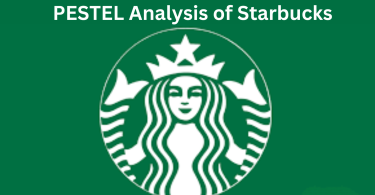
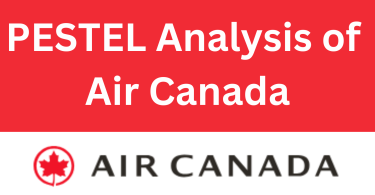


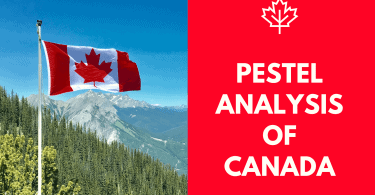

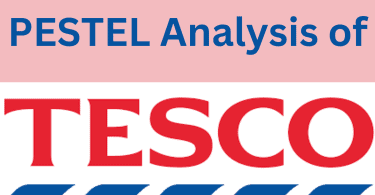

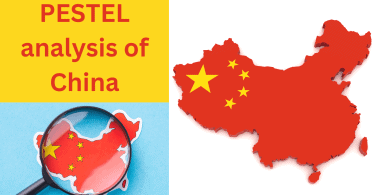
Leave a Comment